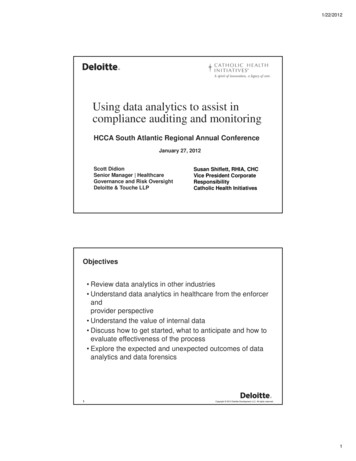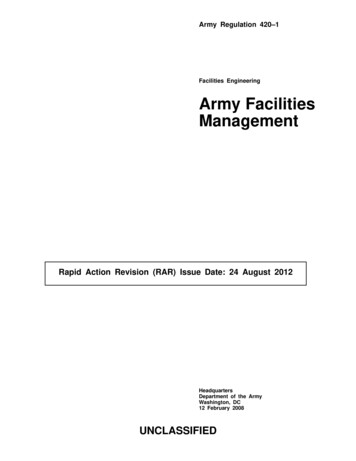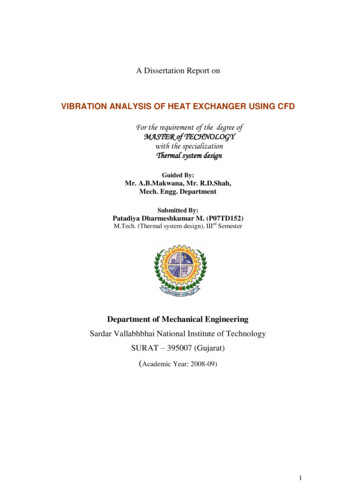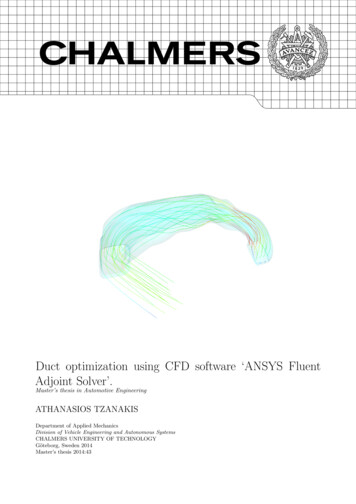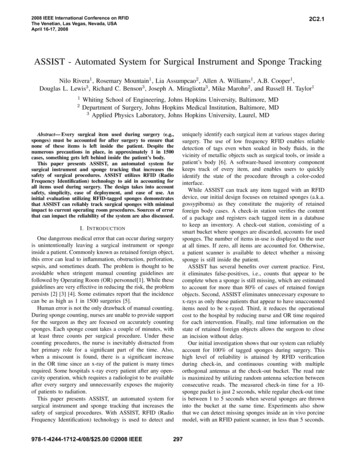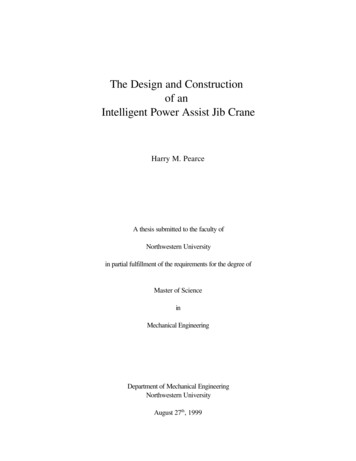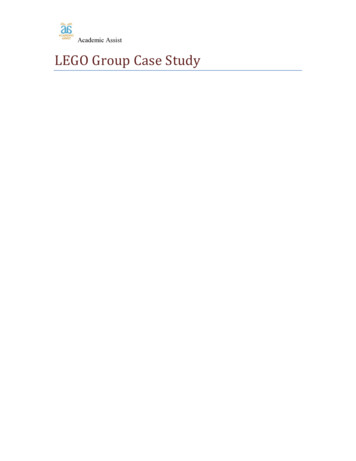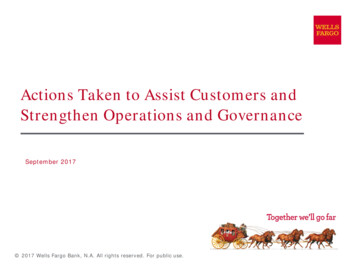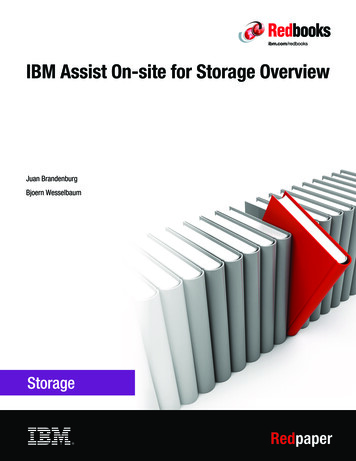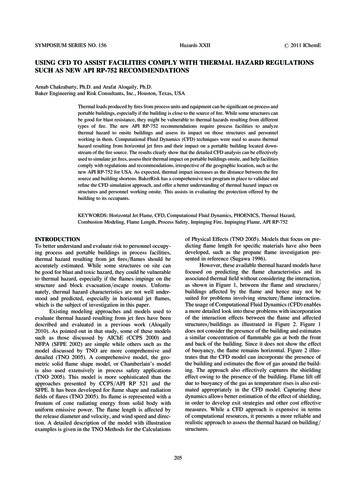
Transcription
SYMPOSIUM SERIES NO. 156Hazards XXII# 2011 IChemEUSING CFD TO ASSIST FACILITIES COMPLY WITH THERMAL HAZARD REGULATIONSSUCH AS NEW API RP-752 RECOMMENDATIONSArnab Chakrabarty, Ph.D. and Arafat Aloqaily, Ph.D.Baker Engineering and Risk Consultants, Inc., Houston, Texas, USAThermal loads produced by fires from process units and equipment can be significant on process andportable buildings, especially if the building is close to the source of fire. While some structures canbe good for blast resistance, they might be vulnerable to thermal hazards resulting from differenttypes of fire. The new API RP-752 recommendations require process facilities to analyzethermal hazard to onsite buildings and assess its impact on those structures and personnelworking in them. Computational Fluid Dynamics (CFD) techniques were used to assess thermalhazard resulting from horizontal jet fires and their impact on a portable building located downstream of the fire source. The results clearly show that the detailed CFD analysis can be effectivelyused to simulate jet fires, assess their thermal impact on portable buildings onsite, and help facilitiescomply with regulations and recommendations, irrespective of the geographic location, such as thenew API RP-752 for USA. As expected, thermal impact increases as the distance between the firesource and building shortens. BakerRisk has a comprehensive test program in place to validate andrefine the CFD simulation approach, and offer a better understanding of thermal hazard impact onstructures and personnel working onsite. This assists in evaluating the protection offered by thebuilding to its occupants.KEYWORDS: Horizontal Jet Flame, CFD, Computational Fluid Dynamics, PHOENICS, Thermal Hazard,Combustion Modeling, Flame Length, Process Safety, Impinging Fire, Impinging Flame, API RP-752of Physical Effects (TNO 2005). Models that focus on predicting flame length for specific materials have also beendeveloped, such as the propane flame investigation presented in reference (Sugawa 1996).However, these available thermal hazard models havefocused on predicting the flame characteristics and itsassociated thermal field without considering the interaction,as shown in Figure 1, between the flame and structures/buildings affected by the flame and hence may not besuited for problems involving structure/flame interaction.The usage of Computational Fluid Dynamics (CFD) enablesa more detailed look into these problems with incorporationof the interaction effects between the flame and affectedstructures/buildings as illustrated in Figure 2. Figure 1does not consider the presence of the building and estimatesa similar concentration of flammable gas at both the frontand back of the building. Since it does not show the effectof buoyancy, the flame remains horizontal. Figure 2 illustrates that the CFD model can incorporate the presence ofthe building and estimates the flow of gas around the building. The approach also effectively captures the shieldingeffect owing to the presence of the building. Flame lift offdue to buoyancy of the gas as temperature rises is also estimated appropriately in the CFD model. Capturing thesedynamics allows better estimation of the effect of shielding,in order to develop exit strategies and other cost effectivemeasures. While a CFD approach is expensive in termsof computational resources, it presents a more reliable andrealistic approach to assess the thermal hazard on building/structures.INTRODUCTIONTo better understand and evaluate risk to personnel occupying process and portable buildings in process facilities,thermal hazard resulting from jet fires/flames should beaccurately estimated. While some structures on site canbe good for blast and toxic hazard, they could be vulnerableto thermal hazard, especially if the flames impinge on thestructure and block evacuation/escape routes. Unfortunately, thermal hazard characteristics are not well understood and predicted, especially in horizontal jet flames,which is the subject of investigation in this paper.Existing modeling approaches and models used toevaluate thermal hazard resulting from jet fires have beendescribed and evaluated in a previous work (Aloqaily2010). As pointed out in that study, some of these modelssuch as those discussed by AIChE (CCPS 2000) andNFPA (SFPE 2002) are simple while others such as themodel discussed by TNO are more comprehensive anddetailed (TNO 2005). A comprehensive model, the geometric solid flame shape model, or Chamberlain’s modelis also used extensively in process safety applications(TNO 2005). This model is more sophisticated than theapproaches presented by CCPS/API RP 521 and theSFPE. It has been developed for flame shape and radiationfields of flares (TNO 2005). Its flame is represented with afrustum of cone radiating energy from solid body withuniform emissive power. The flame length is affected bythe release diameter and velocity, and wind speed and direction. A detailed description of the model with illustrationexamples is given in the TNO Methods for the Calculations205
SYMPOSIUM SERIES NO. 156Hazards XXII# 2011 IChemEbetween turbulence and combustion (Aloqaily 2008). As aresult, a set of models are used to simplify the calculations.These models are discussed in this section. The geometryused in the simulation presented here is also described inthis section.Figure 1. Modeling Horizontal Jet Fire in presence of abuilding using simplified approachNUMERICAL MODEL DESCRIPTIONPHOENICS is a commercial CFD code that can be used tosimulate flow, heat, and mass transfer problems. It containsa range of turbulence, combustion and thermal radiationmodels suitable for simulating turbulent flames. PHOENICS implements the Finite Volume formulation with structured grids to perform the numerical calculations. It usesinterpolation between cells and cells’ surfaces to evaluatescalar and vector quantities at cells’ centers and surfaces,respectively. A special form of SIMPLE algorithm is usedin PHOENICS to handle the coupling between continuityand momentum equations, namely SIMPLEST algorithm(PHOENICS Manual 2009). Convergence can be assessedand controlled in different ways. The residuals of allvariables and spot values of interest can be monitored forrelevant variables in order to assess convergence. PHOENICS mainly implements relaxation techniques to controland promote convergence. Note that an automatic relaxationmechanism is available and was used in most of the calculations, but since parameters can be controlled manuallyas well, that was used to aid convergence in some cases.Models for turbulence, combustion and radiationwere used in combination to simplify the calculations andsolve for the mixing and reaction aspects of the flow. Themodels are briefly described below. Detailed descriptionof the different models, discussed above, is given in aprevious work (Aloqaily 2010).This paper presents CFD analysis results for flameimpinging on buildings, and analyzes the impact of jetfires on the target buildings/structures located downstreamof the fire source. The interaction between the fire and building, as well as its impact on the flame shape and thermalradiation field, are also discussed in this article.The new requirements of the API RP-752 explicitlyrequest facilities to assess thermal hazard to building/structures onsite (API RP 752 2009). Since current modelingapproaches commonly used in process safety applicationsdo not consider the interaction between jet fires and buildings, it is important to consider using CFD, which allowscomplex 3-D geometries to be simulated and provides adetailed description of the fire impact on the buildings.CFD techniques can also predict the change of temperaturewith time at the outer surface of the building (exposed tofire), the inner surface of the building, and inside the building, assessing the protection provided by the building to personnel working inside the building. However, this requiresdynamic simulation, which is beyond the scope of thispaper, and will be investigated in a future work.NUMERICAL STUDYThis section describes the CFD numerical modelingapproach used in the simulations presented in this paper.The jet flame results discussed herein were simulatedusing the commercial CFD software PHOENICS, developed by CHAM, UK (PHOENICS Manual 2009). Thecharacteristic equations defining a jet flame requiressolving turbulence and combustion phenomena, simultaneously resulting in a set of complicated DifferentialAlgebraic Equations. This makes it impracticable to solvefor both phenomena directly, due to the complex interaction.Figure 2. Modeling Horizontal Jet Fire in presence of abuilding using CFD206The standard k-1 turbulence model (Launder 1982) wasused to solve for turbulence. This turbulence model hasproven to have accurate predictions of flows with recirculation, boundary layer, and sheer layer type of flows,and is widely used in engineering applications (Aloqaily2008; Launder 1990; Zhou 1999; Mattick 2005).The Simple Chemically-Reacting System (SCRS)model, which implies mixing-controlled and fast reaction, was used to simulate the combustion in thispaper. This model was chosen because the combustionreaction between the fuel used in this study (methane)and air is fast, and the combustion phenomena is controlled primarily by the mixing rate of fuel jet and surrounding air (Spalding 1971). This assumption hasproven to be valid especially for highly volatile andgaseous fuels such as the one considered in this analysis(i.e. methane). It has been proven that this assumptionsimplifies the calculations significantly (Spalding1979; PHOENICS Manual 2009).The IMMERSOL radiation model, as implemented byPHOENICS, was used in combination with the combustion and turbulent models to estimate the heat radiationfrom the jet flame. The model was chosen for this analysis as it can handle the uncertainty in the absorption and
SYMPOSIUM SERIES NO. 156Hazards XXII# 2011 IChemEFigure 3. Schematic of Geometry and Simulation Domain for Fire Cases Simulated in This Paperwas varied to represent three different levels of thermal radiation on building surfaces (high, medium and low thermalimpact). The high, medium and low thermal loads are represented with thermal radiation levels of 37.5 kW/m2,12.5 kW/m2 and 4.0 kW/m2, respectively. These thermallevels are capable of causing different levels of damage tostructures and injury to personnel (as will be explainedlater in this paper).The type of boundary conditions (BC) used in thesimulations was identical for all cases. The jet fire isscattering coefficients, and is not computationallydemanding (PHOENICS Manual 2009). The combination of standard k 2 1, SCRS, and IMMERSOL efficient solution methodmodels provide a robust andology for simulating horizontal jet flames that combinesgood accuracy with reasonable demand for computational resources. The results presented in this paperare generated using these three models, as implementedin PHOENICS.GEOMETRY AND BOUNDARY CONDITIONSThis paper focuses on the simulation of horizontal nonpremixed methane jet flame, which can result from burningof methane subsequent to its accidental release from flammable processing units/sources. The fire is impacting atarget building located downstream of the fire source. Theformulation of the problem is given in this section.Figure 3 illustrates the simple geometry and the simulation domain for the impinging flame. Figure 4 is a closerlook at the geometry of the target building, showing itsdimensions. The target building represents typical BlastResistant Modular Building (BRMB) used onsite, which iscommon in process facilities. Three cases have beenmodeled in this study, covering a building located at different distances downstream of the fire source.The jet fire simulations presented in this paper wereall performed for methane releases from 2 inch releasesize at 1,000 psig and atmospheric temperature. As aresult a fixed burning rate was used in all simulations.Three cases were analyzed for this fixed burning rate, andthe distance between the release source and target buildingFigure 4. Schematic of Target Building used in SimulationsPresented in this Paper207
SYMPOSIUM SERIES NO. 156Hazards XXII# 2011 IChemEto be pure methane at 258C, and sensitivity analysisshowed that temperature has insignificant impact on thesimulation results as the jet temperature rises quickly dueto combustion.The CFD analysis presented in this paper was performed using a standard numerical approach that was welldescribed in a previous work performed by the authors(Aloqaily 2010). As described in this previous work, theapproach was validated against experimental tests performed by BakerRisk, and the results were used to verifythe simulation output.represented with a release of methane from a horizontalpipeline, where fixed mass flow rate BC was set at theexit of the pipeline. The pipeline was assumed to be at aheight of 1.0 m above the ground level. A fixed velocityinlet BC was defined for surrounding air, which wasassumed to flow uniformly with low turbulent intensity of5%. The released fuel (methane) was assumed to beflowing in the same direction as the wind (no crosswindeffect was considered). This results in the flame being symmetrical in shape around the plane that goes through thecenter of the simulation domain. This in turn implies thatit is sufficient to solve the problem using half of thedomain and assuming the other half as a mirror image (i.e.applying symmetry boundary condition across the calculation domain shown in Figure 3 to divide it into two).Note that although Figure 3 and Figure 4 show a completedomain, the majority of cases analyzed in this paper weresimulated using half of the domain due to symmetry,which reduces the time needed for calculations and allowsfor higher grid resolution.An outlet BC was set for the four other edges of thesimulation domain shown in Figure 3 (in the case of sym
The new API RP-752 recommendations require process facilities to analyze thermal hazard to onsite buildings and assess its impact on those structures and personnel working in them. Computational Fluid Dynamics (CFD) techniques were used to assess thermal hazard resulting from horizontal jet fires and their impact on a portable building located down- stream of the fire source. The results .
